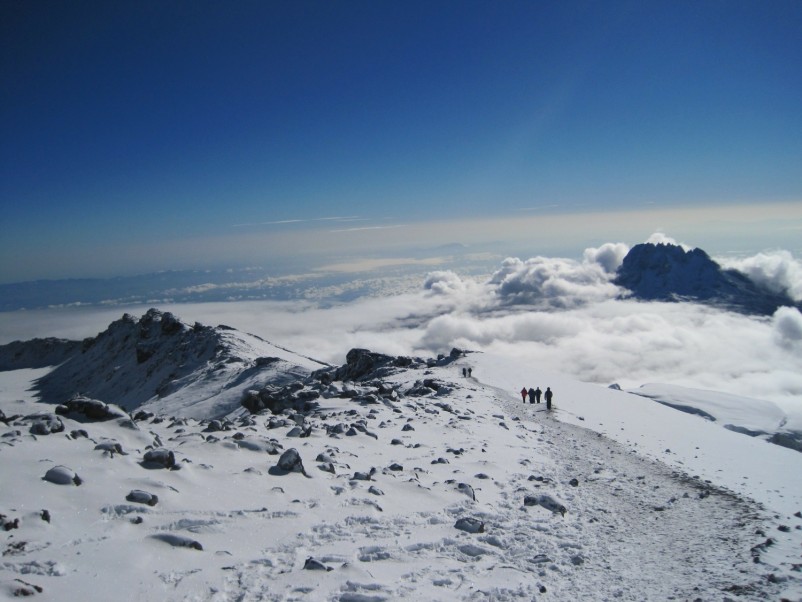
Mountain climbing can improve someone's stamina, endurance, and muscle strength. Aside from the exercise are the fantastic views that come along with this outdoor activity.
There are many places where people can go mountain climbing, and one of the most popular ones is Mount Kilimanjaro.
Mount Kilimanjaro
Located in Tanzania, Mount Kilimanjaro is the tallest mountain in Africa. It is the world's tallest freestanding mountain at 5,895 meters. It is a dormant volcano and adorned with snow.
The first recorded hike to the peak of this mountain was in 1889. And since then, it has started to become famous for mountain climbers.
Climbing Kilimanjaro
Mountain climbers had taken a liking to Mount Kilimanjaro, but because it's prided as Africa's tallest mountain, how challenging is the climb to the top?
As a starting point, know that there are seven different established routes you and your friends can choose from to climb up Kilimanjaro. These routes vary in difficulty and duration and will depend on the hiker. Remember that the climb to Kilimanjaro is not a race and it's okay to just enjoy the journey.
How Hard Can the Climb Get?
The difficulty of this journey does not only depend on which route you will take. Other factors that can make the climb more challenging should also be considered.
Here are some elements that can affect the difficulty of climbing Kilimanjaro:
1. Altitude
When you climb Mount Kilimanjaro or any other mountain, the air's oxygen content decreases and gradually drops. Having less oxygen means you get less power with every breath you take. Lack of oxygen will also make you dizzy.
So, when you reach the summit, each of your breaths has approximately only about half the usual amount of your oxygen intake. That is why proper acclimatization is so important -- it helps the body to go by with less oxygen than usually. Among some permutations which happen are: red blood cells start to multiply faster than usually to intensify the transmission of oxygen through the body; breath becomes more intense and deeper; and remote parts of lungs become "activated."
2. Fitness or Health Condition
Your health will play a significant role in this activity, especially your physical strength. Since this is a long and high climb, being physically fit is not a requirement. You need to at least have an average fitness level to endure and complete this adventure.
3. Acclimatization
Altitude sickness is one of the primary reasons why people fail at completing their climbs up the Kilimanjaro. That is why acclimatization can significantly affect the difficulty of your adventure. Slowly going uphill is the best way to make yourself get used to the new environment and avoid altitude sickness.
4. Determination
Everything can already be physically tough, and if you are not determined in this adventure, you will probably fail. This journey would take a toll on you physically and eventually challenge your mental tenacity.
What You'll Need When Climbing Mount Kilimanjaro
Nothing beats proper preparation, especially when you're planning on going out for mountain climbing. Know what you need and what these tools are for.
So, what do you need to prepare for exactly? The journey.
You will be climbing for days, and even if it's a famous mountain hike journey, you still cannot expect comfortable accommodation. Necessities are also not easy to find when you're anywhere up there.
Here are some things you need to be prepared for:
1. Your Route
Know what route you'll be most comfortable with, depending on your experience and need for the adrenaline. Remember that there are seven routes you can choose from. Choose the path in which you think will be easier for your health and fitness.
2. Your Guide
Get a guide to assist you in your chosen route as you climb to the peak, especially if you are a beginner or your first time climbing this mountain. These guides are beneficial as they will tell you a lot of tips for climbing the mountain. Make sure to listen to them and follow what they say. Having a great guide will make the hike easier.
3. Food and Water
Never forget water and food. Dehydration and hunger are very likely to happen as you go up to your route. You will burn calories, and you will need to eat and drink water or anything that will help you sustain yourself so you can continue and finish your climb.
4. Right Equipment
It will help if you have the right equipment that will aid you in your climb.
Start with a comfortable pair of shoes or boots as it is hard to walk in uncomfortable shoes. Next, you will need something for your head for protection during daytime and nighttime. Make sure to wear suitable clothing as the temperature in Mount Kilimanjaro varies.
You can prepare and bring other essential equipment with you, such as a sleeping bag, trekking poles, a head torch, and even sunscreen.
Make sure you invest in equipment that is durable and agreeable.
Prepare well and take on the Mount Kilimanjaro challenge. Climb, endure the journey, reach the peak, and enjoy the experience.

 Share on Facebook
Share on Facebook




















